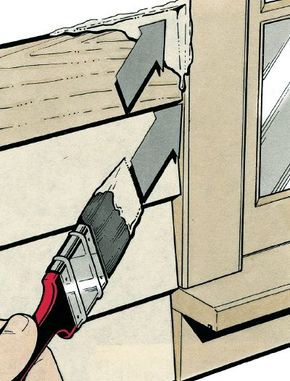After you have prepped the exterior surface of your home, you're almost ready to brush, roll, or spray on a new coat of paint. First, because paint colors tend to vary slightly from batch to batch, mix all the paint together in one or two large containers. Leftover paint should go back in the original paint cans and be resealed.
Plan your painting day so you follow the sun, working in the shade after the sun has dried off the early morning moisture. Try not to let the setting sun catch you in the middle of an exterior wall at the end of the day. If you have to stop, try to finish painting an entire course of siding all the way across the house. Otherwise, you may leave lap marks in the middle of the course.
Advertisement
Also, plan to paint high places in horizontal sections across the top of the exterior wall. Never lean away from an extension ladder or reach more than an arm's length to either side. Paint one high section, move the ladder, and paint another, creating a painted band as you go. Repeat the process all the way across the exterior wall. Then, lower the ladder to work on a lower section. An extension ladder can be perilous. Make sure it's on firm footing about one-quarter of its length out from the foundation of the house. Also make sure it doesn't tilt to the left or right. Always check both extension hooks to ensure they are firmly locked on the supporting rungs. The two sections of the ladder should overlap at least three rungs. When moving the ladder, watch out for power lines. Here's another tip: Hang your paint bucket on a rung with an S-shape bucket hook so you can hang onto the ladder with one hand while painting with the other.
If your house has dormers, you may have to paint them from the roof instead of a ladder. If so, the ladder should reach at least 3 feet above the edge of the roof so you can step onto the roof without standing on the top rungs of the ladder.

When painting either clapboard or shingles, pay special attention around door and window casings. At the top of each casing you'll find a drip cap or metal flashing that tucks up under the siding. Paint a tight seal between metal and wood. At the sides of the casings, jab your brush into joints, then smooth out the paint to seal them. At casings and for the undersides of siding laps, you may prefer to use a corner roller. Before dismounting and moving the ladder, check your work for drips, runs, thin areas, and missed spots.
Advertisement
